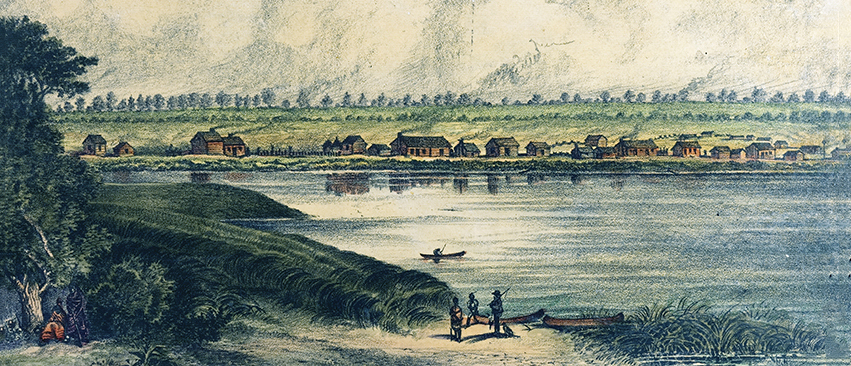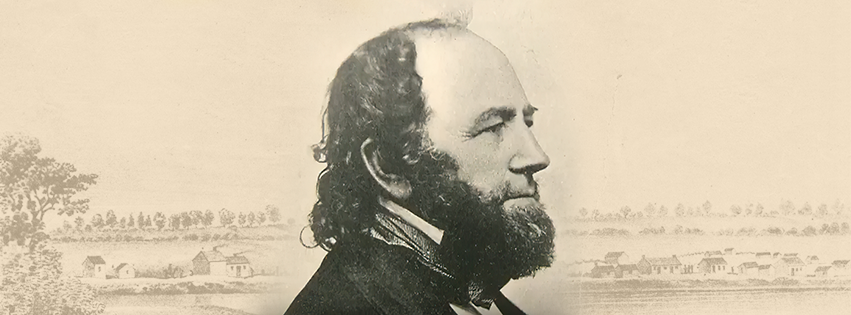
My wife Beth has served on the Board of Trustees of the Peoria Historical Society for several years. She’s been very involved as the Society’s recording secretary, as well as directing its historical tours. Last year, as a result of the COVID pandemic, the tours were switched from the traditional trolley/bus format to walking tours. Those walking tours will carry on again this summer beginning this month, taking participants through some of the most interesting parts of Peoria.
Beth also organizes the Historical Society’s annual Trivia Night contest, including developing its 80 questions about local history. Her objective is to cover a wide range of topics, mixing relatively easy questions with some moderately difficult questions and a few very difficult ones—ensuring that even the most knowledgeable of Peoria history buffs are presented with a challenge. But how difficult is too difficult?
One More Question
A few months ago, Beth was sitting at the computer and working on the questions for this year’s contest, which took place in March. “Mark, I need one more question for the contest,” she said to me. “Any suggestions?”
After thinking for a few minutes, I offered the following: “Sure dear, how about asking how many men have served as president of Peoria?”
“Oh, quit goofing around and get serious,” she replied. “That’s way too easy! Everyone knows Peoria has had six presidents. And yes, I know, they’ve all been men.”
Now I felt like I was being challenged. Having also served as a Society trustee, including two years as board president, my next attempt was intended to be much tougher. “Okay, well how about this: During what years did Peoria have a president?”
She turned around and offered a stern stare. Now I knew there was trouble brewing. “That’s even easier than your first suggestion,” came the retort. “Most folks know that Peoria’s presidents served as head of the town board from 1835, when the settlement was first incorporated, to 1845, when Peoria was incorporated as a city.”
It was just about time for my afternoon nap, so I quickly replied, “Alright, name the man who served as president of Peoria twice!” Then I headed off to the sofa before she had time to respond.
Later that night at dinner, she addressed the issue again. “Alright, you got me—I had to look it up. Dr. Rudolphus Rouse. I’m going to use it, but if a lot of folks complain that the question is too obscure, I’ll tell them to talk to you.”

From Settlement to City
Here’s the rest of the story. The Illinois state legislature approved a bill on March 1, 1831, authorizing the citizens of the settlement of Peoria to incorporate as a town. But whether because of threats arising from the Black Hawk War going on to the north, or perhaps as a result of disputes over land claims by its former French residents, the citizens of Peoria did not take advantage of this legislation for another four years.
On the 18th of July, 1835, Peoria’s citizens voted to approve the incorporation of their community on the banks of the Illinois River as a town. Five men were elected as trustees: Dr. Rudolphus Rouse, Chester Hamlin, Rufus P. Burlingame, Charles W. McCallen and Isaac Evans. When they met later that same day, the five trustees elected Rouse as president. When Evans declined to serve, they selected Cyrus Leland to take his place.
Meeting one week later at the store operated by Burlingame, they elected Mr. Leland as town clerk and passed a resolution that the new town’s boundaries should embrace an area of one square mile. They also appointed Burlingame the town treasurer. Over the next decade, six men would serve as president of Peoria:
- Dr. Rudolphus Rouse (1835 – 1836)
- Henry W. Cleveland (1836 – 1837)
- Dr. Rudolphus Rouse (1837 – 1841)
- Peter Sweat (1841 – 1842)
- Lewis Howell (1842 – 1843)
- John King (1843 – 1844)
- Halsey Merriman (1844 – 1845)
After ten years of being incorporated as a town and enduring the leadership of six men as the town’s “president,” the citizens of Peoria apparently believed that a change should be considered. Another election was held on April 21, 1845 to consider upgrading the status of Peoria from a town to a city. A city charter had already been drafted and approved by the state legislature, and the proposal received overwhelming approval—with 162 votes cast in favor and only 35 votes against the change.
With the approval of a new city charter, the position of President of the Town of Peoria was abolished. An election was held seven days later to elect new city officials, including the newly created position of Peoria mayor, as well as eight aldermen. While the incumbent town president, attorney Halsey Merriman, threw his hat in the ring, he was soundly defeated by his opponent. And so, after a short ten years which saw six men serve as town president, that position ceased to exist, and businessman William Hale became Peoria’s first mayor.
Fast forward to 2021: Beth was right. No one provided the correct answer to my question at Trivia Night. And to my dismay, I am forever banned from submitting questions for future events. PM
For tour information or to learn more about the Peoria Historical Society, visit peoriahistoricalsociety.com.
- Log in to post comments

